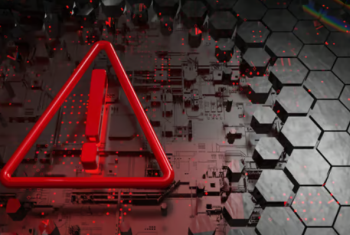How can I protect against Ransomware?
Ransomware is a type of malware that encrypts a user’s files and demands a ransom payment in exchange for the decryption key. Protecting against ransomware requires a multi-layered approach that includes technical measures, user awareness, and regular backups.
in exchange for the decryption key. Protecting against ransomware requires a multi-layered approach that includes technical measures, user awareness, and regular backups.
- Keep your software up to date: Regularly update your operating system, antivirus software, and other applications. Updates often include security patches that address vulnerabilities exploited by ransomware.
- Use reputable security software: Install a reliable antivirus/antimalware solution and keep it updated. Ensure it has real-time scanning and ransomware detection capabilities.
- Exercise caution with email attachments and links: Be vigilant when opening email attachments or clicking on links, especially if they are unexpected or from unknown senders. Verify the legitimacy of emails and their attachments before opening them.Example: Do not open an email attachment claiming to be an invoice from an unfamiliar source without confirming its authenticity through other means, such as contacting the sender directly.
- Beware of suspicious websites: Avoid visiting suspicious or untrustworthy websites that may contain malicious ads or downloads. Stick to reputable sources for software and avoid downloading from unauthorized or peer-to-peer platforms.
- Enable pop-up blockers: Configure your web browser to block pop-ups, as they can sometimes contain malicious links or deceptive content that can lead to ransomware infections.
- Backup your data regularly: Maintain regular backups of your important files and store them in a secure location. Use a combination of offline and cloud backups to ensure redundancy. Offline backups should be disconnected from the network after the backup process.
- Recommended – UNLIMITED CLOUD BACKUP FOR YOUR PC OR MAC
- Use strong and unique passwords: Create strong, complex passwords for your accounts, and use a password manager to help you remember them. Avoid reusing passwords across multiple accounts.
- Enable two-factor authentication (2FA): Use 2FA whenever possible, as it adds an extra layer of security by requiring an additional verification step, such as a temporary code sent to your mobile device, along with your password.
- Segment your network: If you have multiple devices or systems on your network, segment them into separate zones. This way, if one device gets infected with ransomware, it will have limited impact on the rest of your network.
- Educate yourself and your employees: Stay informed about the latest ransomware trends and educate yourself and your employees about the risks. Train them on how to identify phishing emails, suspicious websites, and other common attack vectors.
Example: Conduct regular security awareness sessions covering topics like recognizing social engineering techniques, safe web browsing practices, and reporting suspicious incidents.
- Enable macros and scripts cautiously: Macros and scripts can be exploited by ransomware. Consider disabling macros in applications like Microsoft Office by default and only enabling them when required.
- Limit user privileges: Implement the principle of least privilege (PoLP) by assigning users the minimum necessary permissions required to perform their tasks. Restricting administrative privileges can minimize the impact of ransomware infections.
- Monitor network traffic and behavior: Employ network monitoring tools to detect any suspicious activity or traffic patterns that may indicate a ransomware attack in progress.
Example: Intrusion detection systems (IDS) and intrusion prevention systems (IPS) can help identify and block malicious network traffic.
- Create an incident response plan: Develop and document a comprehensive incident response plan to guide your organization in the event of a ransomware attack. This plan should include steps for containing the infection, mitigating damage, and recovering from backups.
Remember that no security measure can guarantee complete protection against ransomware, but implementing these practices will significantly reduce the risk. Regularly reviewing and updating your security measures is essential to stay ahead of evolving ransomware threats.